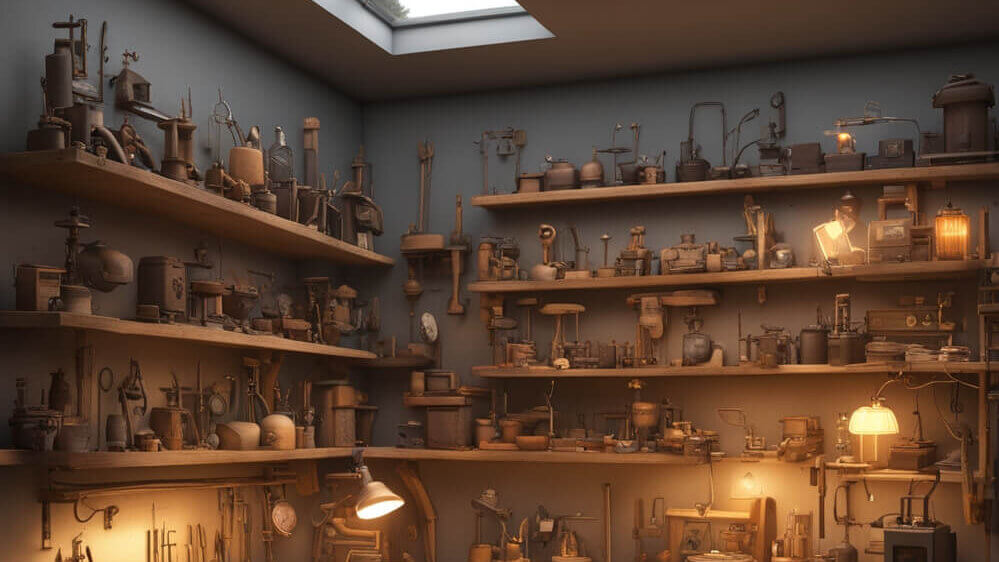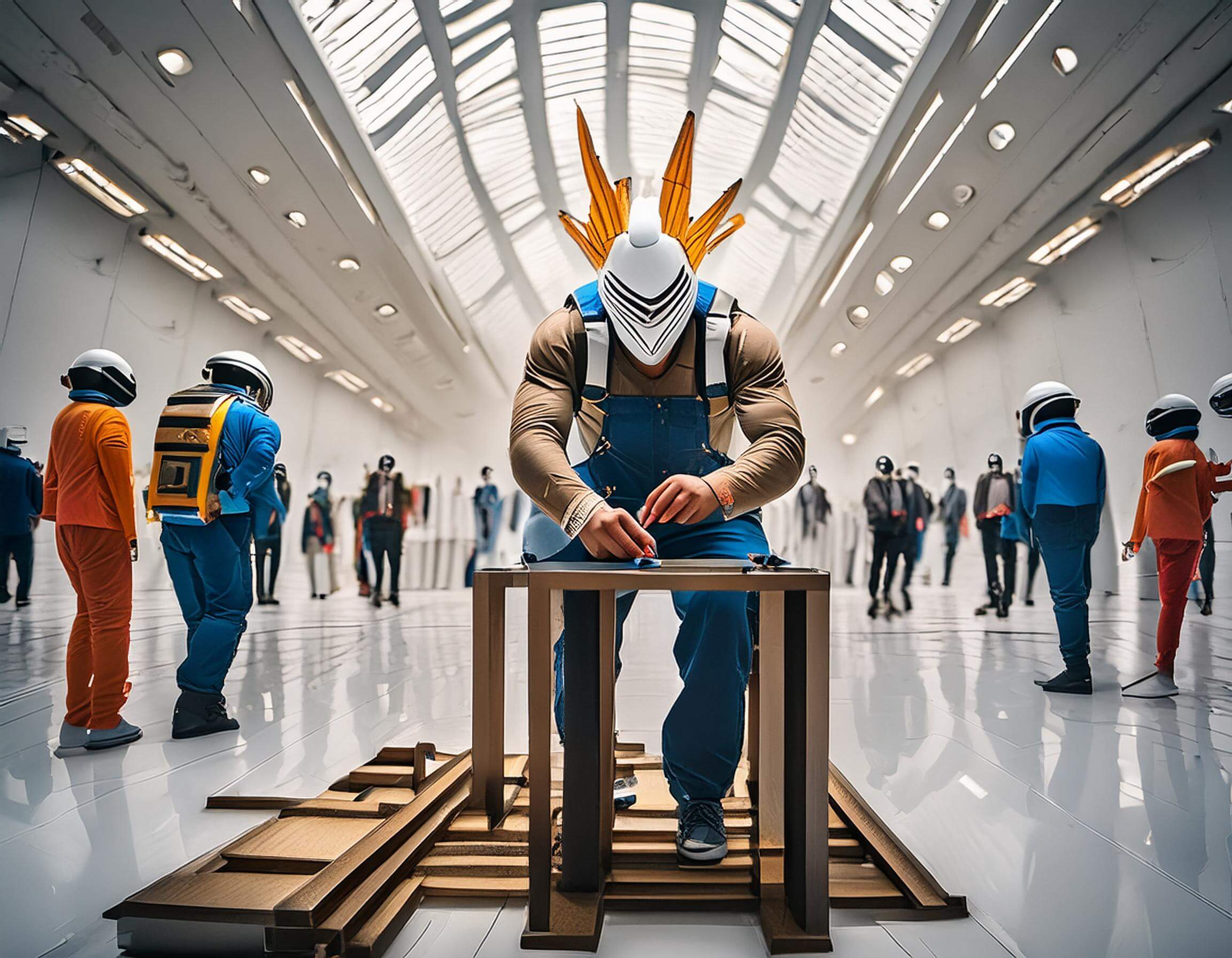ARTMag 05/2057

Picture 2: Workshop of lost things – location unknown is the normal workspace of our todays shown artist
Pictures created with Adobe Firefly
In the not-so-distant future, were automation and efficiency have replaced tradition and craftsmanship, there stands a solitary figure who holds on to the fading art of repair. This craftsman known to selected few as “Opifex”, has made a name for himself by reviving the forgotten products (or treasures) of the past. Today, ARTMag investigate the life and work of this artist.
ARTMag:
Thank you for taking the time to speak with us. In a world where most prefer to replace rather to repairing their furniture or everyday items, what inspires you to dedicate your life to the art of repairing old and used things?
Opifex:
I am happy to share my story. My inspiration comes from an appreciation for yesterday’s craftsmanship. Growing up, I was surrounded by object that were built to last – furniture, tools and even toys. These items carried to me a sense of history which our modern and disposable goods today lack. I wanted to honor the legacy and preserve these values and even the skills associated with repair, craftsmanship by hand with basic tools and durability.
ARTMag:
Today, where natural resources like wood are not longer freely available but very precious and waste is rampant, how do you find your clientele?
Opifex:
My clients are often individuals who feel disillusioned by the throwaway culture we live in. Many of them are very wealthy collectors who own rare pieces, hidden away in vaults knowing that these objects are worth millions. They come to me when they want to restore pieces not just for their values, but for their sentimental and historical importance.
ARTMag:
Could you describe a particularly memorable project you’ve worked on?
Opifex:
Sure. One of my most memorable projects involved restoring an old grand piano. It has been in a state of disrepair for decades, and its owner a renowned musician, wanted to bring it back to life as a tribute for music of the old days. The restoration process was very difficult, requiring finding authentic materials and focusing on rebuilding each component. The musician was gathering friends around and they watched me while I practice my craft. The joy on the musician’s face when the first notes were played on the restored piano was indescribable. It felt like breathing life back into history.
ARTMag:
How do you balance the demands of modernity with the traditional methods you employ?
Opifex:
It is a complicated balance. While it is important for me to use traditional tools and techniques, I also incorporate modern tech if it is not against my workflow. For example, I might use digital imaging to analyze structural weaknesses or imitate wood filament printing to recreate missing parts. The key is to stay true to the spirit of the original craftsmanship while also embracing innovations.
ARTMag:
In your opinion, what does the future hold for the art of repair?
Opifex:
I believe there will always be a place for repair, even in a highly automated future. As people become more aware of the environmental impact of their choices, there will be a growing appreciation for sustainability and the value of repairing rather than discarding. Additionally, as certain resources become scarcer, the skills and knowledge required to repair and maintain existing items will become increasingly vital.
ARTMag:
Finally, what message would you like to share with aspiring artisans and the broader public?
Opifex:
To aspiring artisans, I would say: never underestimate the power and importance of your craft. Your skills are not just about fixing things; they are about preserving history, culture, and values that are increasingly rare. To the broader public, please consider the impact of your choices. Embrace repair and reuse whenever possible. By valuing what we have and taking care of it, we can create a more sustainable and meaningful future.
Opifex embodies a profound respect for the past and unwavering commitment to a more sustainable future. In a world dominated by disposable cultures and items just made by robotics or additive manufactures, his art serves as a powerful reminder of the enduring beauty and value of past things that last.


